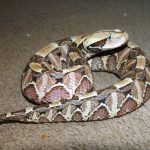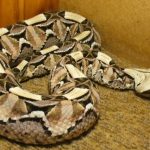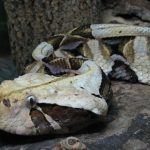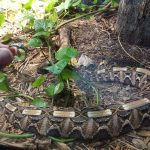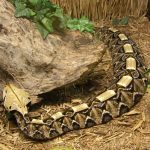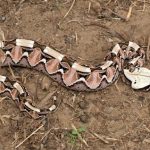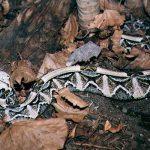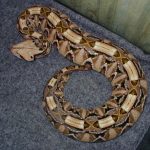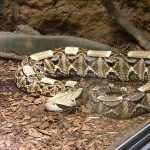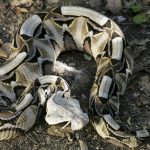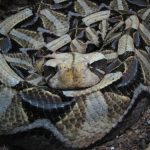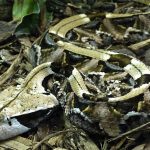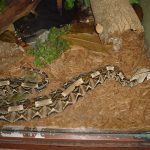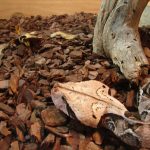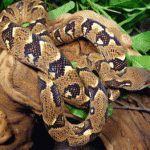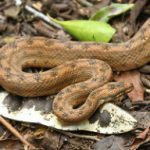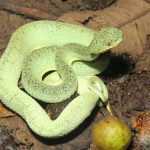Gaboon Viper
Gaboon viper is a venomous viper species native to sub-Saharan Africa. It is the largest member in its genus and the heaviest venomous snake found in Africa. The species has the longest fangs and the highest venom yield among other snakes. There are two recognized subspecies of this snake.
| Kingdom | Animalia |
| Phylum | Chordata |
| Subphylum | Vertebrata |
| Class | Reptilia |
| Order | Squamata |
| Suborder | Serpentes |
| Family | Viperidae |
| Subfamily | Viperinae |
| Genus | Bitis |
| Scientific Name | Bitis gabonica |
| Other Names | Swamp Jack, Gaboon Adder, Butterfly Adder, Forest Puff Adder |
| Length | Around 125–155 cm; largest specimen recorded is 205 cm |
| Weight | Up to 20 kg |
| Color | Comprises of a series of uneven, pale subrectangular patches along the center of the back with dark yellow-edged hourglass markings; brown or fawn rhomboidal shapes on the flanks with pale vertical central bars; pale belly with uneven brown or black patches; white or cream head consisting of a fine dark line at the middle, rear corners have black spots; below and at the back of each eye contains a dark blue-black triangle; iris is cream, orange, yellow-white or silvery |
| Distribution | Guinea, Ghana, Cameroon, Togo, Equatorial Guinea, Nigeria, Gabon, Republic of the Congo, Uganda, Kenya, eastern Tanzania, Zambia; Sierra Leone and Liberia in West Africa |
| Habitat | Rainforests, woodlands, grasslands, agricultural areas |
| Diet | Birds and mammals, rodents, field mice and rats, hares and rabbits |
| Hibernation Fact | Don’t hibernate |
| Venom Fact | Cytotoxic |
| Breeding Season | September – December |
| Mode of Reproduction | Viviparous (giving birth to live young) |
| Litter Size | 30 to 60 |
| Gestation Period | Around 7 months |
| Reproductive Age | 3 to 5 years of age |
| Average Lifespan | In Wild: Around 18 years In Captivity: 20 to 22 years |
| IUCN Conservation Status | Not Listed |
Gaboon Viper Pictures Gallery
- African Gaboon Viper
- Bitis Gabonica
- Gaboon Pit Viper
- Gaboon Viper Fangs
- Gaboon Viper Habitat
- Gaboon Viper Images
- Gaboon Viper Photos
- Gaboon Viper Pics
- Gaboon Viper Pictures
- Gaboon Viper Snake
- Gaboon Viper Venom
- Gaboon Viper
- Gaboon Vipers
- The Gaboon Viper
- Pictures of a Gaboon Viper
- Gaboon Viper Diet
- Gaboon Viper Pit
- Gaboon Viper Skull
- Gaboon Viper Teeth
- Pics of Gaboon Viper
- Gaboon Viper Care
Published on October 12th 2016 by staff under Snakes. Article was last reviewed on 20th September 2023.


